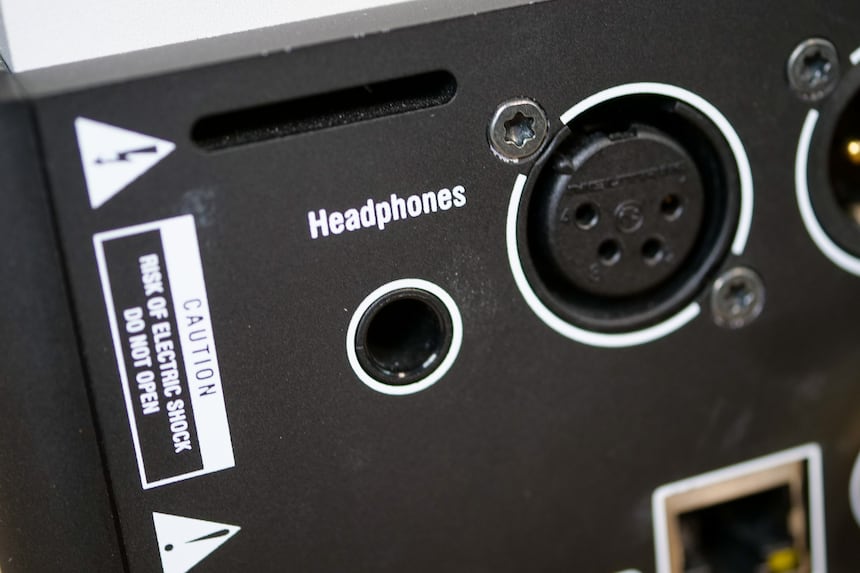Mola Mola is a Dutch company that was set up barely 10 years ago. But one of its creators boasts much more experience than that: engineer Bruno Putzeys is the brains behind Mola Mola. His reputation precedes him since, after having worked for Philips, he participated, amongst other things, in the creation of the Class D Hypex and Purifi amplifier modules used by many renowned HiFi manufacturers. He has also worked on loudspeakers, co-founding Kii Audio and other electronics with Grimm Audio.
The very limited Mola Mola range includes a pre-amp, an integrated amp, monoblocks, a phono pre-amp, and the Tambaqui DAC/streamer. There’s everything you need to build a complete setup. It sports a very recognisable and indistinguishable design. As an additional option, the Makua preamp and integrated Kula can take a digital card containing most of the Tambaqui’s conversion and streaming functions.
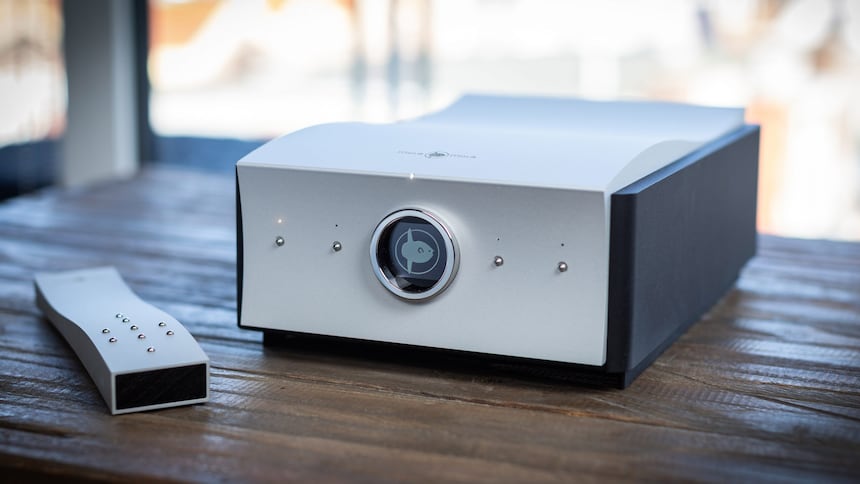
Tambaqui General Presentation
Mola Mola is original. Primarily due to the brand name and logo which takes its inspiration from the famous sunfish (as well as its scientific name). But, above all, it’s the design of the device that makes it stand out. It consists of a central metal frame with a fish profile-shaped upper part. The front and top of the product are crafted from a single piece of metal.
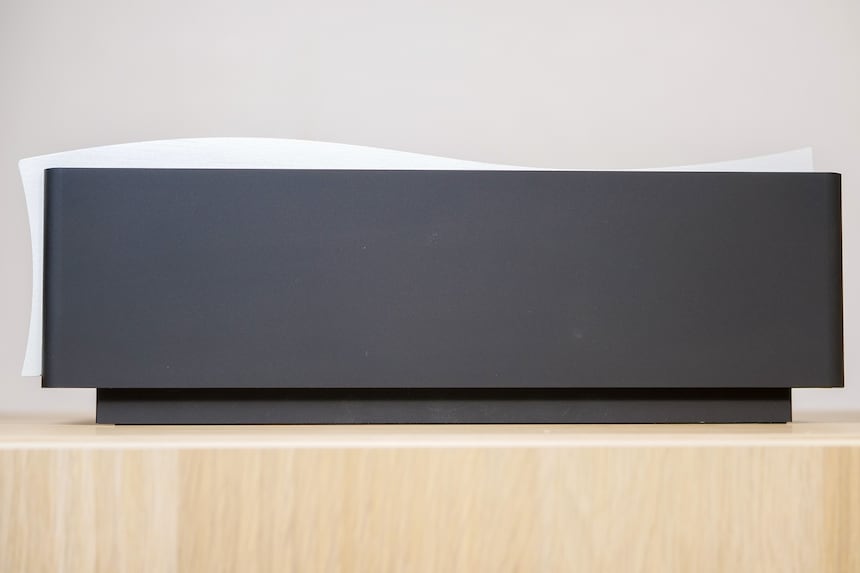
The sides are made up of anthracite grey vertical panels that end in thin slats occupying the entire depth of the Tambaqui. These slats end in a tiny rubberised area that runs along the entire length, which serves as the contact area with the cabinet housing the appliance. This unusual design is a far cry from the imposing shock-absorbing feet of competing hi-fi products. And yet, the Tambaqui is stable and firmly planted on its stand.
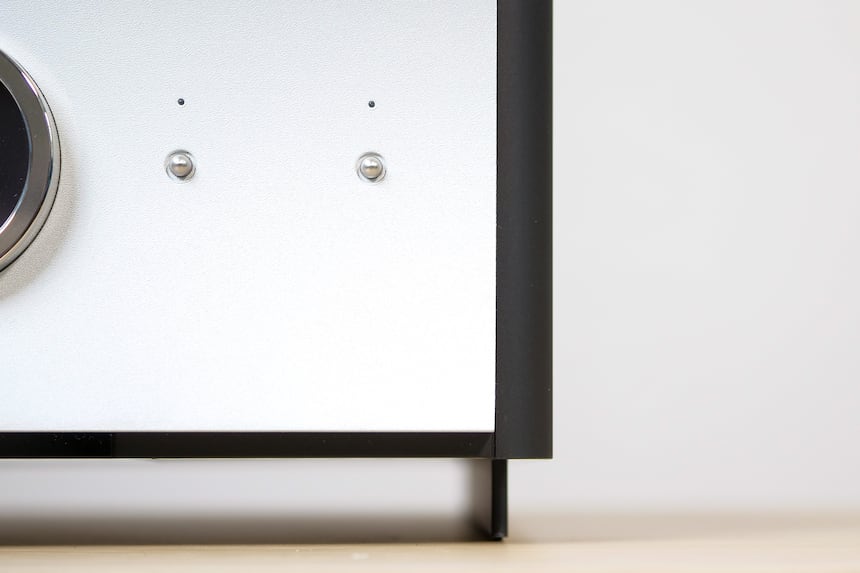
The austere front face is enhanced by a central round display that once again echoes the brand name. When we switch it on, the logo is displayed, and you might be mistaken for thinking that you’re viewing a fish through a porthole. Four keys are used to select one of the preset programmes. There is no power-off button, just keep your finger pressed on one of the keys if you want the Tambaqui to switch to standby mode.
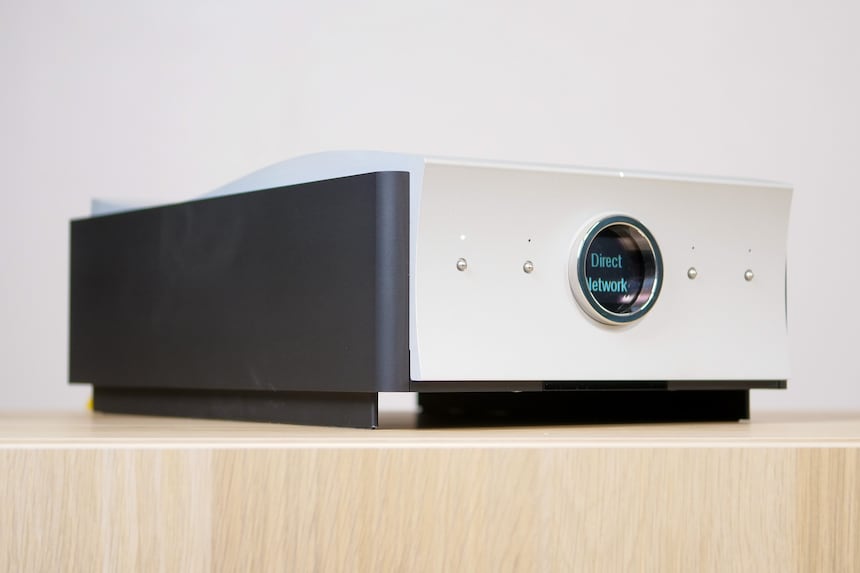
The rear panel accommodates all the connectors, including the two headphone outputs. They were placed here so as not to spoil the facade. You have the choice between asymmetrical (6.35 mm) and symmetrical (XLR40) output. Right next to it are the symmetrical analogue XLR outputs. This is a constant at Mola Mola, which favours this type of output. Two 12V triggers will light up the other links in the chain in unison.
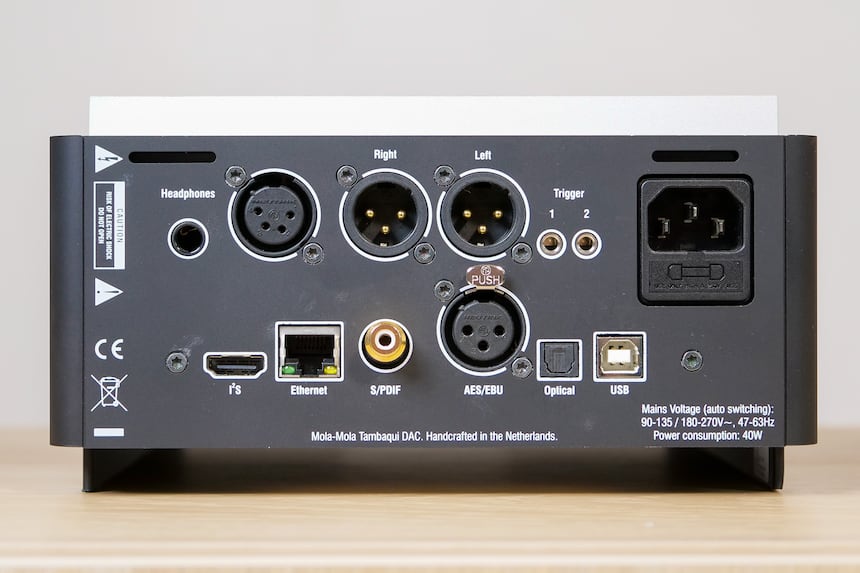
The digital section manages up to five external sources with as many different connectors. It supports XLR, optical, coaxial, USB, and I2S formats. They are complemented by an Ethernet socket for streaming access. There is no WiFi, however, there is Bluetooth.
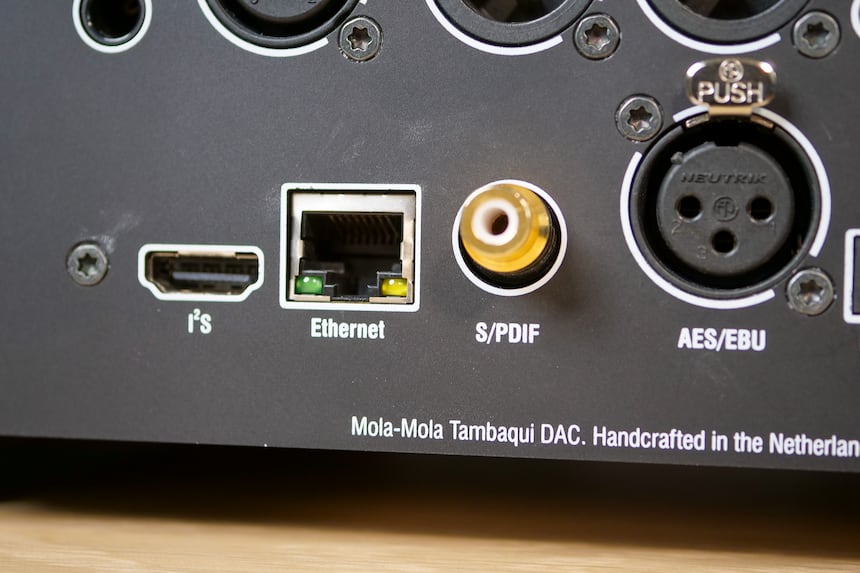
The conversion is entrusted to an FPGA chip, that is to say, a programmable circuit, and not to a conventional conversion chip. This means Mola Mola doesn’t have to depend on a particular supplier or current DAC trends, and it will also allow them to develop future product software features. The design is very striking. To obtain the output analogue signal, there are two processing stages to complete. The advertised noise level and distortion figures are impressive, well beyond what the ear can make out.
Using the Tambaqui
The Tambaqui is at the centre of different configuration possibilities. First of all, it can just be used as a DAC. In this case, the output level is fixed to feed a pre-amplifier or an integrated amplifier. Thanks to a lossless digital volume control, the Tambaqui also serves as a digital pre-amplifier. This is ideal if you only have this type of source.
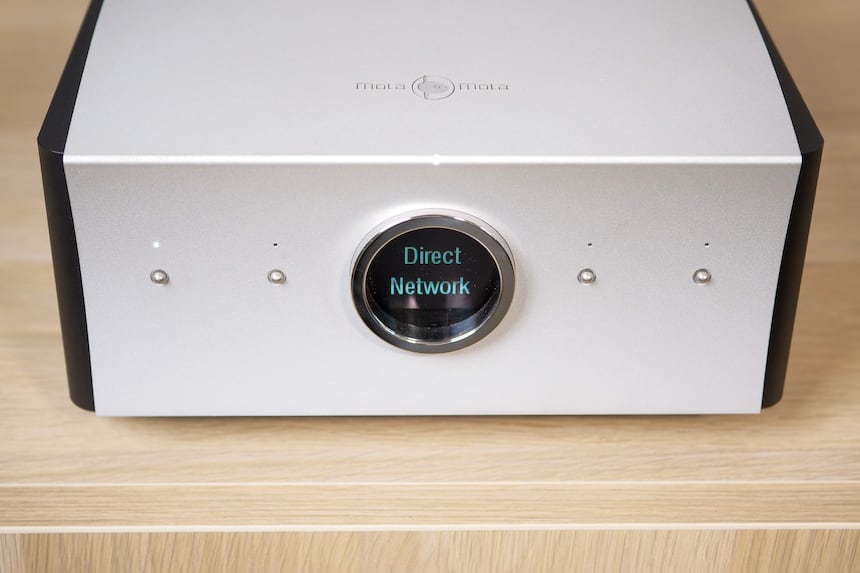
The streaming part is dedicated solely to using Roon software. It’s very practical since Qobuz is an integrated feature. But there is no other way to take advantage of the Tambaqui’s network connection, neither in UPnP/DLNA, Chromecast, or AirPlay. That’s not the aim of this device, which is intended for top-of-the-range configurations where only very high sound quality counts.
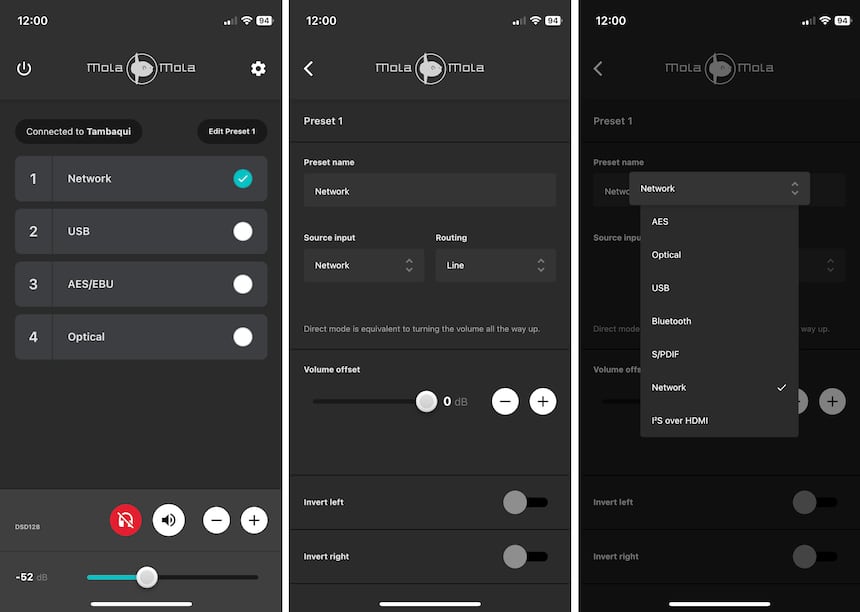
There is a simple mobile app used to configure the Tambaqui and its four pre-selection keys on the front. Indeed, there are a total of seven sources available but only four buttons. Each button can be individually configured, and either be linked to an input, a gain setting, phase inversion or trigger activation. For each pre-selection key, you can decide whether the output will be fixed or variable, or whether it will be directed solely to the headphone sockets.
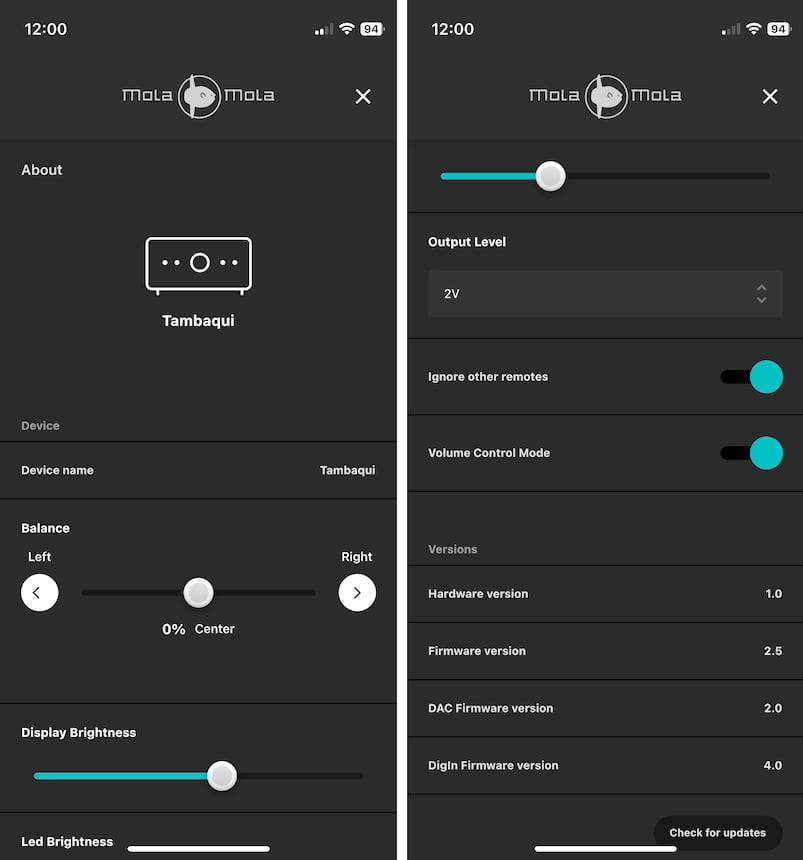
In the Tambaqui’s general settings, in addition to the possibility of renaming it, you can also set the most suitable output level for the connected device: 0.6V, 2V or 6V. The application only works using Bluetooth, so you have to be in the same room as the device. In addition to the configuration settings, it can also control the volume and the current pre-selection key, allowing you to switch seamlessly from one to the other.
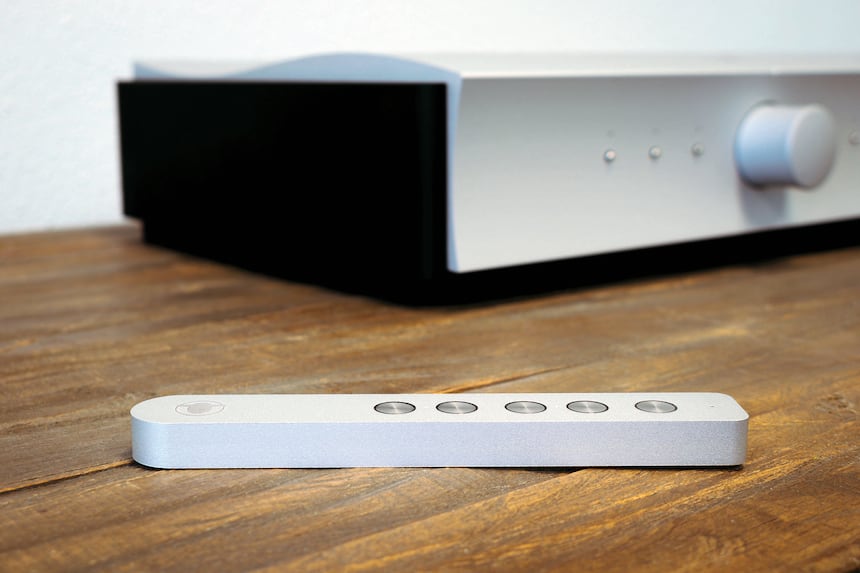
Mola Mola has provided a mini remote control made of the same metal as the Tambaqui chassis. Its five buttons are used to activate the mute feature, control the volume, and scroll through the pre-selection keys. It is practical enough for everyday use. Of course, if you use the Roon application, it acts as the Tambaqui’s remote control for both music playback and volume control. You can constantly check the volume level on the DAC display.
Listening
The Mola Mola Tambaqui infiltrated our system as a network drive and pre-amplifier. We hooked it up to an SPL s800 power amplifier and our favourite Dynaudio loudspeakers. This configuration, with so few elements, is more than enough if your main audio source is Qobuz.
Listening to Feist’s electro-pop on his new album Multitudes, the music filled the room like never before. The voice is precise and stable in the centre. While the sounds are equally projected behind and in front of the speakers. They also escape to the sides, immersing us completely in the music. The touch of the strings is impressively realistic and delicate, while the resonance of the stringed instrument ensemble is clearly felt. The Tambaqui masters the restitution of timbres by pushing back the limits of what a sound reproduction system can do. We are surprised by how much we can continually increase the volume without feeling the slightest hint of discomfort.
Tomode’s electro-disco on their EP Riviera demonstrates the full extent of Tambaqui’s expertise across the spectrum. Even with our usual loudspeakers, the lowest frequencies are identified, articulated, and punchy. Not that there is more level to be found, but there is certainly an increased veracity and musicality in the message delivered by Mola Mola’s DAC/streamer. This is not to the detriment of the midrange and treble which fully retain their strength and precision without any bandwidth imbalance.
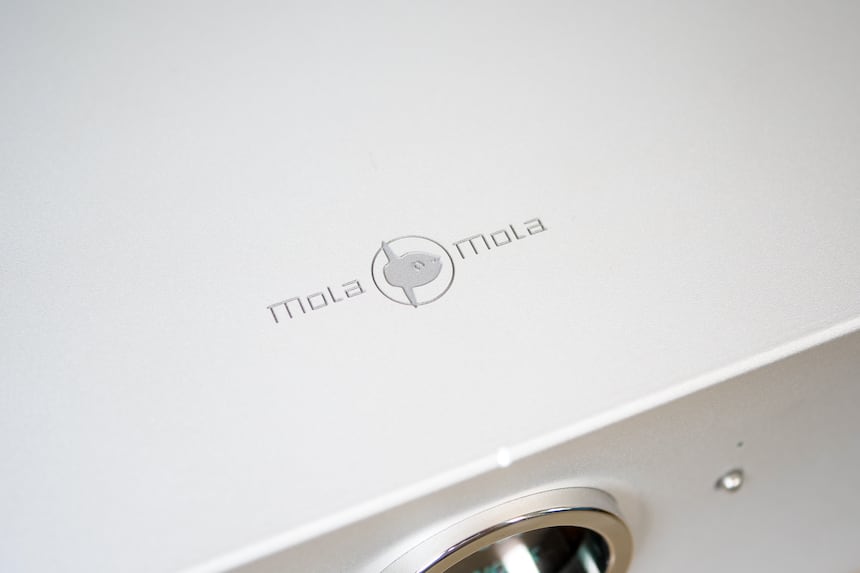
It’s a real pleasure to listen to Erik Truffaz’s latest album on this device. The presence and the depth of the sound scene make it possible to intricately follow each instrument while everything else has been mixed and concentrated centre stage. On this complex recording, we can easily feel the different layers in a sound bubble. It is typically the kind of digital device capable of extracting the best from each title, regardless of the quality and specifics of the recording, offering the smoothest possible reproduction, without distorting the signal. This is a rare quality in the world of high fidelity that can only be found with ultra high-end products.
We end our listening experience with the headphone output to which we connected a Focal Radiance (connected in symmetry via a customised cord). The qualities become apparent during this personal listening experience. A lot of the material is found in the centre and a lateralisation springs from the headphones despite their enclosed format. There is power and separation, lots of separation in fact, so some may feel a little disappointed by the lack of a cross-feed setting. It would be a shame to focus our attention on this detail since the Tambaqui headphone amplifier merits everyday use and allows you to do so without a dedicated device.
